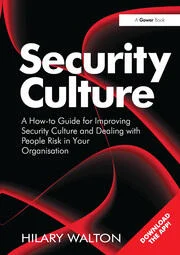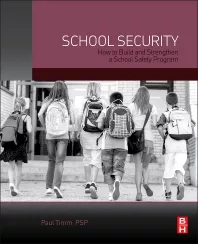Shifts and Spending on Security in a Down Economy
The just released two studies – from the Police Executive Research Forum (PERF) and from ASIS International – show the sour and sweet impact of today’s economy.
PERF shows that a significant number of municipalities are cutting law enforcement budgets and officer numbers while, at the same time, reporting increases in crime due to the rocky economy. This means that enterprises using security services and systems will have to take up some of the slack.
ASIS International results indicate that the need for security has increased in the current economic climate. Indications are stronger among the CSO segment, with 78% reporting an increase, compared to 66% of the managers. One strategy that CSOs and security management will use: Increase application and deployment of electronic and other technologies with backup or redundant systems in place.
ASIS International conducted a survey of its members in January in an effort to assess the impact of the current economic environment. The survey respondents were asked about the economic impact on the security functions of their organizations during the previous six months (June-December 2008). ASIS is the preeminent organization for security management professionals worldwide.
Names were randomly selected from lists of members of the CSO Roundtable and ASIS members who are practitioners with management responsibility. These two groups were targeted in order to provide a perspective both from chief security officers of the largest and most influential organizations around the world, as well as security managers representing a cross-section of employers. All of the respondents spend all or most of their time directly managing or providing security services for their employers.
Results indicate that the need for security has increased in the current economic climate. Indications are stronger among the CSOs, with 78% reporting an increase, compared to 66% of the managers.
Reasons cited for the increased need differ by group, and ostensibly by size of company, since the security managers tend to work for smaller organizations. General increases in crime and theft, followed by employee lay-offs and furloughs, topped the CSOs' list of reasons. Security managers, on the other hand, reported increases in theft of, and damage to, physical property, as their primary concerns.
Both groups had similar experiences in terms of direct impacts, most frequently reporting travel budget restrictions and postponements/freezes in new hires. Other concerns involve reductions in professional development and training budget restrictions, and the postponement or freezes in purchasing security equipment and technology.
CSOs, in general, are better prepared to manage security services if significant reductions in resources occur, with nearly three out of five reporting that they have formal contingency plans in place. On the other hand, less than half of the responding security managers were in a similar position.
While there was some commonality between the contingency plan characteristics reported by each group, the CSO characteristics tended to be more strategic in nature, with greater conformity to the concept of enterprise risk management.
In the PERF study, nearly two out of three police agencies responding to a new survey said they are currently making plans for cutting their budgets, according to the Police Executive Research Forum (PERF), a Washington, D.C.-based independent research organization made up of local and state police officials. And 44 percent of the police departments report increases in certain types of crime which they believe can be attributed to the economic crisis.
Of the 233 responding police agencies, which generally consisted of the larger police departments across the country, 63 percent said they are preparing plans for an overall cut in their total funding for the next fiscal year. In a large majority of cases, the police officials indicated that they are not merely making contingency plans or thinking about cuts as an academic exercise; of those who said they are planning cuts, 88 percent said they have already been told to expect cuts by their mayor, city council, or other governing authority.
On average, the responding agencies said they are planning a cut of 6.24 percent in their overall funding level.
PERF conducted the study in late December and early January in order to measure the extent to which the faltering national economy is impacting local police departments’ budgets and operations, and to explore police executives’ views about whether the economy is affecting crime levels.
“Police departments usually are among the last agencies to be cut when the economy turns bad, because elected officials see public safety as a top priority and try to find other places to cut,” said Miami Police Chief John Timoney, president of PERF. “The fact that most police departments currently are being asked to make cuts is an indication of how badly this recession is affecting local tax bases.”
Even as police officials are planning how they will implement cuts in their total funding for the next fiscal year, the survey showed that many already have trimmed funding in various areas. Specifically:
53 percent of responding agencies said they already have implemented a hiring freeze for non-sworn personnel, and 27 percent said they have implemented a freeze for sworn positions.
62 percent said they have already cut overtime spending. This may be more significant than it appears, because police departments often use overtime to meet their minimum staffing levels. (In fact, 52 percent of the agencies responding to PERF’s survey said they “regularly rely on overtime to meet minimum safe staffing.”) Overtime also is often used as a method of temporarily increasing the number of officers on patrol, so police can respond to a crime spike in a certain neighborhood or handle a major public event without incurring the more permanent expense of hiring additional officers.
49 percent said they have already cut back or eliminated plans to acquire technology.
47 percent said they have already reduced or discontinued various types of officer
training.
34 percent said they have discontinued, reduced in size, or delayed classes for new police recruits.
24 percent are already reducing police employment levels through attrition.
12 percent said they are considering laying off police employees or forcing retirements, and 10 percent said they have already used unpaid furloughs of employees to reduce spending.
PERF Executive Director Chuck Wexler noted that those cuts are especially significant in light of the fact that 52 percent of the responding agencies reported that they operate on a fiscal year that begins on July 1. That suggests that most of the responding departments are currently operating on funding that their elected officials approved back in the spring or early summer of 2008, months before the economic crisis hit.
“It wasn’t until September and October that we started reading all the headlines about Fannie Mae, Freddie Mac, Lehman Brothers, Merrill Lynch, AIG, Washington Mutual, and Wachovia,” Wexler said. “If police departments are already tightening their belts everywhere we look and we are seeing an initial impact on crime, it’s quite sobering to think about how things will look six months from now, when police departments enter their first real year of being hit with the crisis.”
The survey revealed further signs of trouble in questions about how chiefs are planning to apportion their upcoming budget cuts among various operations or functions. The survey showed the strongest level of agreement (4.39 on a scale of 1 to 5) with the statement, “Sworn officer positions should be the last thing cut in the budget.” Respondents generally said they would not cut sworn positions even to maintain critical elements of their training, equipment, or technology budgets.
And yet, when survey respondents were asked how they would apportion cuts in their overall budgets, they indicated on average that 28 percent of the dollar cuts would come out of funding for sworn personnel. Another 14 percent would come out of funding for civilian personnel, and 11 percent would come out of overtime funding. In other words, for every dollar that police departments are planning to cut from their total budgets, 53 cents will come out of personnel—sworn, civilian, or overtime funding.
“Personnel costs account for the large majority of a police department budget, typically 80 percent or more of your total funding,” said Prince William County, Va. Police Chief Charlie T. Deane, vice-president of PERF. “So it is not surprising that we are already seeing many departments resorting to hiring freezes and reducing their size through attrition. And if the economic crisis continues, we will see more departments looking at layoffs.”
The survey asked police executives about any plans they are making for reorganizing their departments in order to save money:
43 percent said they are planning to rely to a greater extent on less-costly civilian
employees, rather than sworn officers.
36 percent said they are planning ways of discontinuing or delaying the police response to certain types of calls for service (such as encouraging residents to file reports about minor crimes online, rather than in-person to an officer).
29 percent said they are planning to discontinue special units, such as street crimes units, narcotics task forces, community policing units, and so on.
16 percent said they are planning to reduce public access hours at district stations.
“The plans to discontinue special units are especially disconcerting,” Chief Timoney said, “because in many cities, it is these special units that have proved effective in reducing violent crime rates—for example, by focusing intensive police resources on crime ‘hot spots.’ ”
When police officials were asked whether their jurisdiction has experienced increases in crime levels in recent months that they believe can be attributed substantially to changes in the economy and/or their police budgets, 44 percent said they had experienced such increases in crime. (55 percent responded “no,” and 1 percent said they did not know.)
Of the 100 responding agencies who said they have experienced increases in crime attributable to the economy:
39 percent said they have seen an increase in robberies.
32 percent said they have seen increases in burglaries, such as incidents in which
appliances and other equipment are taken from vacant homes.
40 percent said they have seen increases in thefts, such as thefts of GPS devices from cars and other “opportunistic” crimes.Looking for a reprint of this article?
From high-res PDFs to custom plaques, order your copy today!





